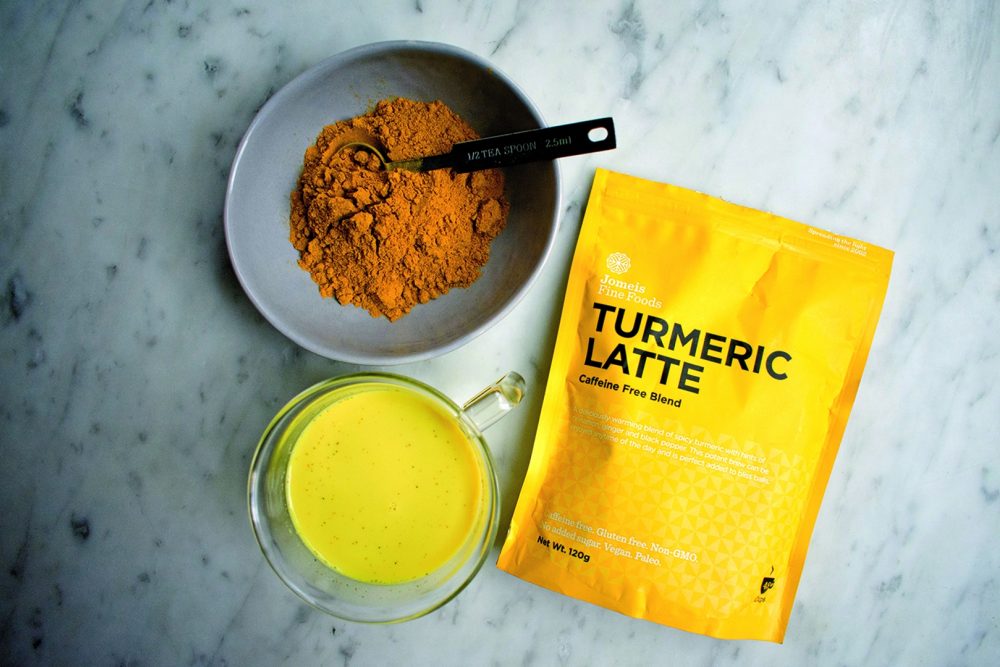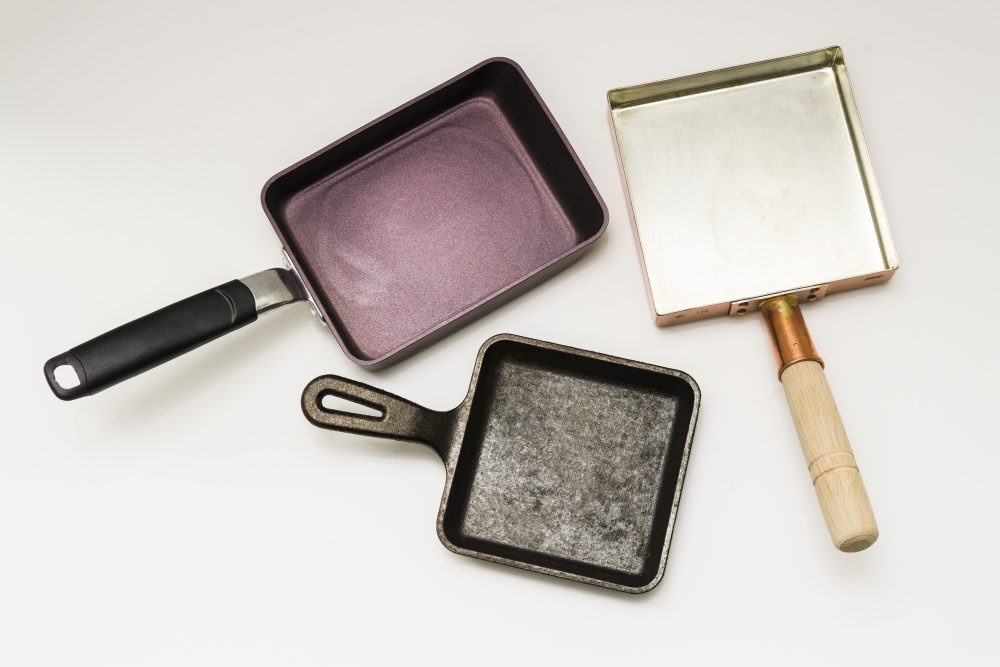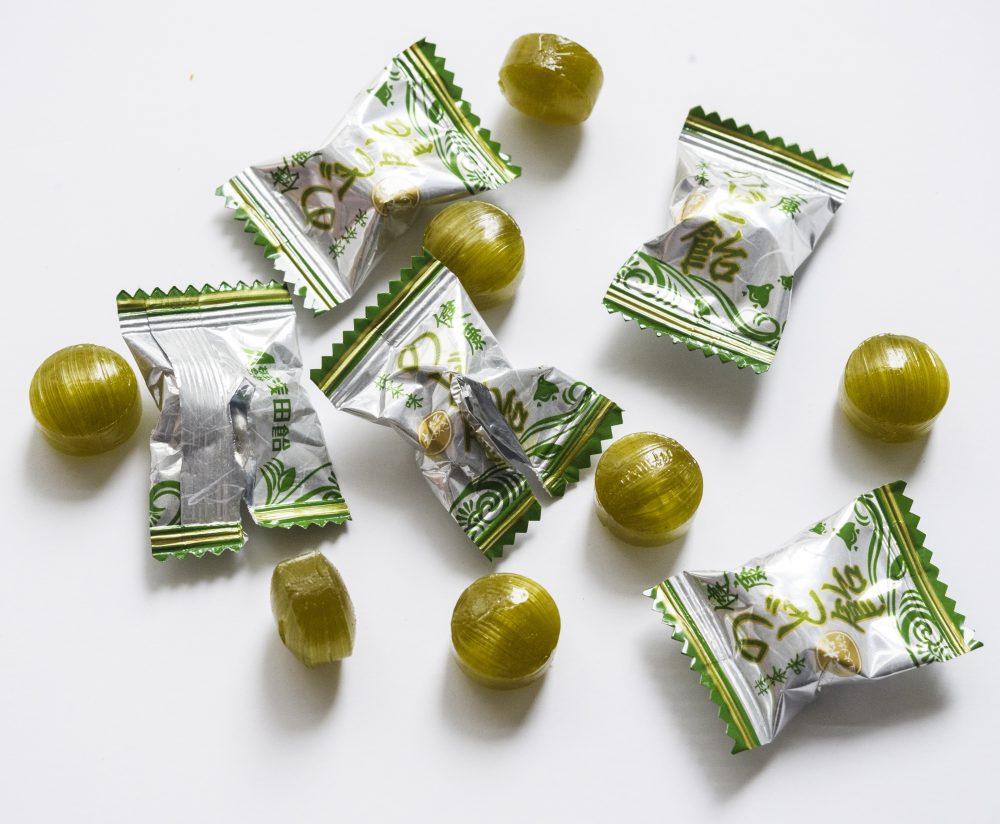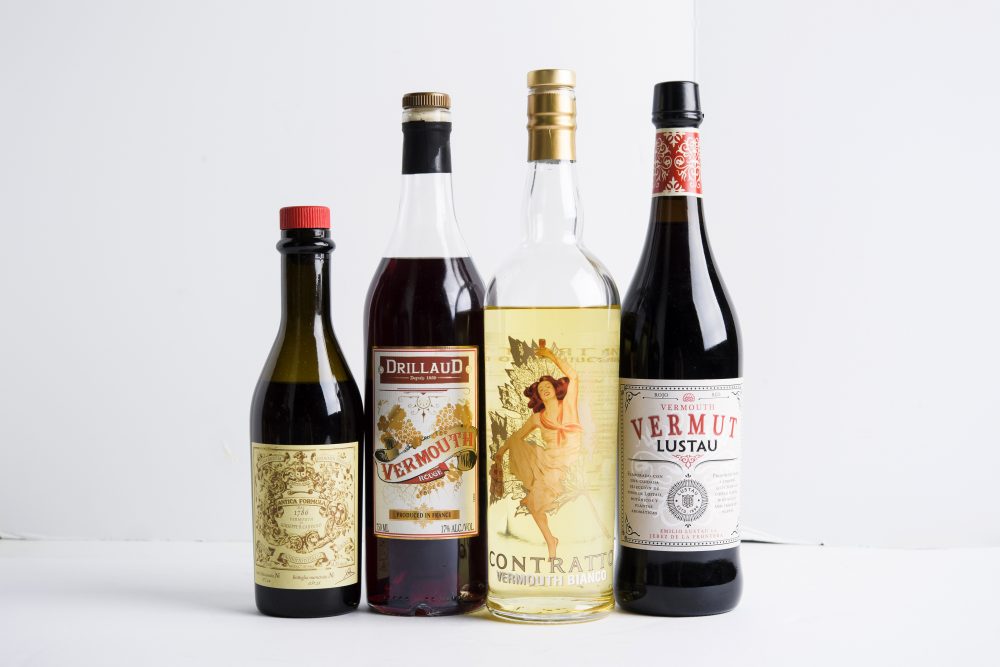
A Lighter, Brighter Latte
Recipes for turmeric lattes abound online, but we hadn’t found a packaged option we loved until we tried Australia’s Jomeis Fine Foods Turmeric Latte. Their vegan, sugar-free and gluten-free blend of turmeric, cinnamon, ginger, black pepper and coconut milk powder sweetened with stevia is as delicious as it is simple to make. Just ½ teaspoon blended with hot milk or water, then mixed with cold or hot milk produces a rich, warmly spicy drink with a light cinnamon flavor. Order online ($12 for 48 servings) at jomeisfinefoods.com.au.
The Best Pan for Square Eggs and Toasted Seeds
In Japan, small square or rectangular skillets—called makiyakinabe—are used to cook eggs for rolled omelets and sushi. We also like them for toasting nuts, seeds and spices on the stovetop. Their size is ideal for small quantities, and their
steep sides prevent
seeds from popping out. Toast over low to moderate heat, gently shaking the pan from side to side. Amazon sells several varieties for $20 and up.


Sri Lanka's Answer to Cocktail Nuts
At Lankan Filling Station, a Sri Lankan restaurant in Sydney, we couldn’t resist one of their so-called short eats—deviled cashews. The simple starter combines whole cashews with mustard seeds, chili powder and fresh herbs, all fried briefly in ghee. The gentle spice and crunchy seeds perfectly balanced the rich, tender cashews. To make them, in a large pot, crisp 1 cup cilantro leaves in 2 tablespoons coconut oil, 30 to 60 seconds. Use a slotted spoon to transfer to a paper towel-lined plate. Return the pot to medium-high and add 2 teaspoons mustard seeds. Stir until sizzling, 20 to 45 seconds, then add 2 cups roasted cashews, 1 teaspoon red pepper flakes, 1 teaspoon light brown sugar and ¼ teaspoon cayenne (optional). Cook, stirring, until the nuts are golden and shiny, about 1 minute. Transfer to a medium bowl and toss with the cilantro and 1 teaspoon kosher salt.

Matcha Madness, in Lozenge Form
On a recent trip to Japan, we observed firsthand the popularity of matcha, the vivid, verdant powder made by grinding down young green tea leaves. It’s whisked into hot water to make tea, but it’s also used to flavor countless sweets. In Kyoto’s Nishiki Market, we snacked on matcha donuts. We enjoyed matcha ice cream while touring the grounds of Tokyo’s Imperial Palace, where the information center sells paper cups of the cooling treat. And in Japan’s ubiquitous convenience stores, we could buy anything from matcha Pocky sticks to Oreos with matcha-flavored cream. For us, these items were mostly novelties, but we did find one that we kept coming back to: matcha cough drops. The lozenges have a balanced, bittersweet flavor that makes them soothing, satisfying and mildly addictive. Global.rakuten.com/en sells bags of the drops for under $5.
Spain's Savory-Sweet Bar Sip
In Barcelona, tapas aren’t complete without a glass of sweet vermouth, typically served on ice with a wedge of orange. We liked it best at Disset 17 Graus, a dimly lit bar with wine bottle-lined walls where the classic drink is served with a briny, plump green olive—a great counterpoint to the sweet wine and fruit. In the U.S., sweet vermouths have mostly been fodder fit only for cocktails. But lately we’ve enjoyed an array of bottles worthy of sipping solo. Our favorites include Contratto Vermouth Bianco, a floral, lightly sweet white from Italy ($30); Carpano Antica Formula, a rich and herbal Italian red ($17); Noilly Prat, a fruity and sweet red from France ($11); and Lustau, a Spanish red with lots of cherry and caramel ($20).

Condiments are essential in every culture—salsa in Mexico, chutney in India and aioli in the Mediterranean, to name a few. One of the most piquant and potent we’ve encountered is filefel chuma. Deeply savory, powerfully spicy and slightly fruity, this Libyan hot sauce combines ground sweet and hot chilies with cumin, caraway, oil and an eye- popping amount of garlic (some recipes call for as many as 20 cloves).
Filfel chuma was originally crafted by the Jewish population that resided in Libya for centuries before the 1970s. Waves of Jews migrated from the North African nation in the 19th century, taking the fiery sauce along with them. In recent years, it’s gained popularity in Israel as a transformative addition to shakshuka, the poached egg dish cooked in a pepper- tomato sauce. In the cookbook “Jerusalem,” Yotam Ottolenghi warns cooks to use it carefully. Because of its concentrated flavor, he treats it more like an ingredient than a condiment—smearing it on vegetables before roasting, whisking it into eggs before scrambling and mixing it into marinades before grilling.
At Milk Street, we tried several brands— some pastes, some powders. Our favorite was a dark red paste from Israeli spice company Neptune (available on Amazon, three jars for $22). While its flavor was intense—with a strong chili flavor with deep raisiny undertones— we found it perfectly palatable as a condiment. Like harissa, filfel chuma’s Tunisian counterpart, we like it stirred into lentil and rice dishes, cooked with onions and used as the base for soup, and stirred into cooling yogurt to make a quick dip.



